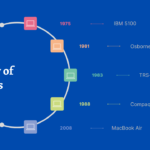jQuery is a powerful and widely-used JavaScript library that streamlines various web scripting tasks. It simplifies processes such as HTML document traversal, manipulation, event handling, and animation, making it a go-to tool for developers looking to enhance the functionality and responsiveness of their websites.
jQuery facilitates easier Ajax calls, enabling seamless content updates without reloading the webpage. This library offers a syntax that is both easier to understand and write compared to standard JavaScript, significantly speeding up the development process.
Despite being overshadowed by modern vanilla JavaScript in many new projects, jQuery still holds a significant place in web development.
Let’s take a look at jQuery versions:
Timeline of Major jQuery Versions’ Releases
-
August 26, 2006jQuery 1.0jQuery 1.0 emerged as a game-changer, simplifying DOM manipulation and event handling for web development.
From 2007 to 2011, numerous updates followed, bringing bug fixes, new features, and improved performance.
jQuery 1.5 marked a significant milestone with a complete rewrite of the Ajax module for better consistency and functionality. jQuery 1.7 introduces .on() and .off() methods, replacing .bind(), .live(), and .delegate(). -
April 18, 2013jQuery 2.0jQuery 2.0 introduces key changes including dropping support for IE 6/7/8, reducing file size by 12%, and refining custom build options to create even smaller versions.
It is also API-compatible with jQuery 1.9, ensuring a smooth upgrade process.
For best performance, use an X-UA-Compatible tag or HTTP header to prevent newer IE versions from emulating older ones. -
June 1, 2016jQuery 3.0jQuery 3 marked a turning point for the library, prioritizing modern web development. It dropped support for older browsers, freeing up resources for advancements.
Animations became smoother and more efficient thanks to the requestAnimationFrame API. The API itself went through some housekeeping, removing deprecated functionalities to promote cleaner code and adherence to best practices. -
February 6, 2024jQuery 4.0 BetaA beta version of jQuery 4.0 was released, indicating a potential major update with a focus on modern browsers and features. It has dropped support for IE 10 and older browsers, and removed deprecated functions to streamline the code.
The update aligns the order of focus and blur events with W3C specifications, and enhances jQuery.ajax to support binary data like FormData.
JSONP promotion has been removed in favor of CORS, and the source code has migrated to ES modules, using Rollup for packaging.
The slim build is now under 20k bytes gzipped, removing Deferreds and Callbacks in favor of native Promises.





